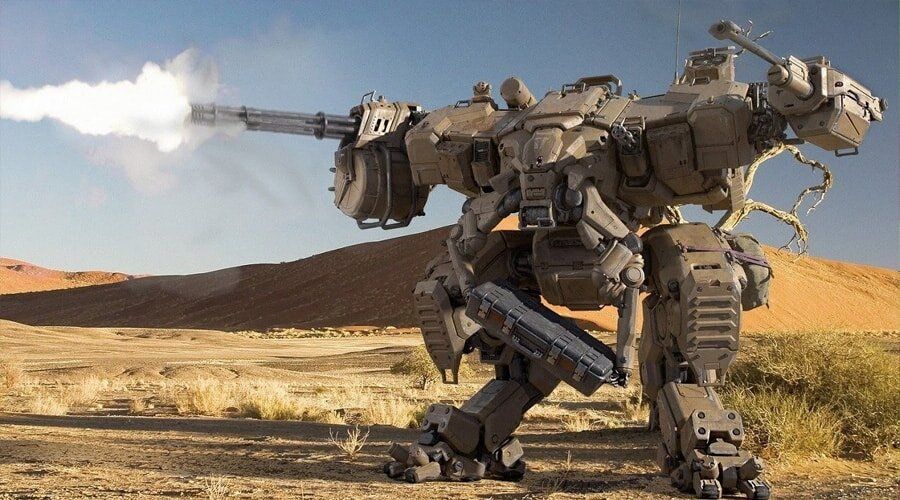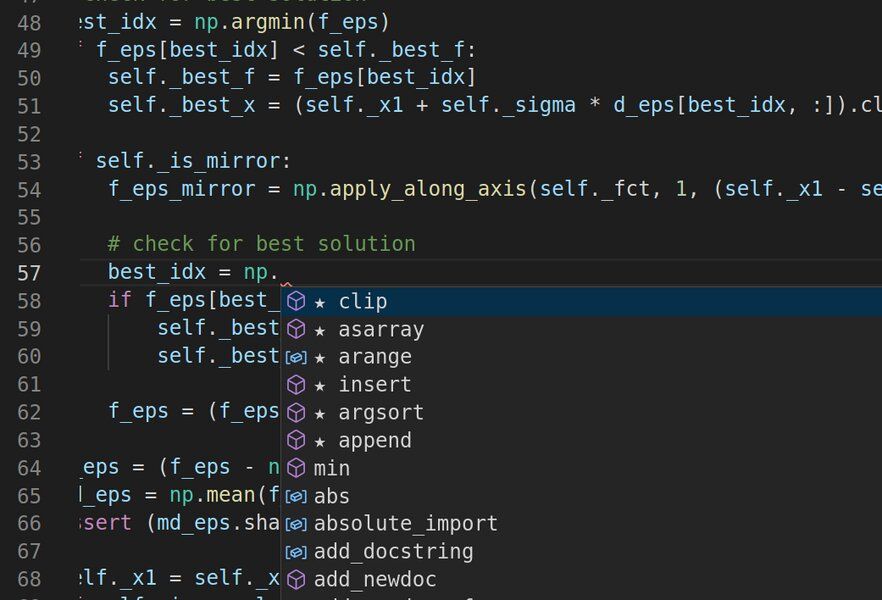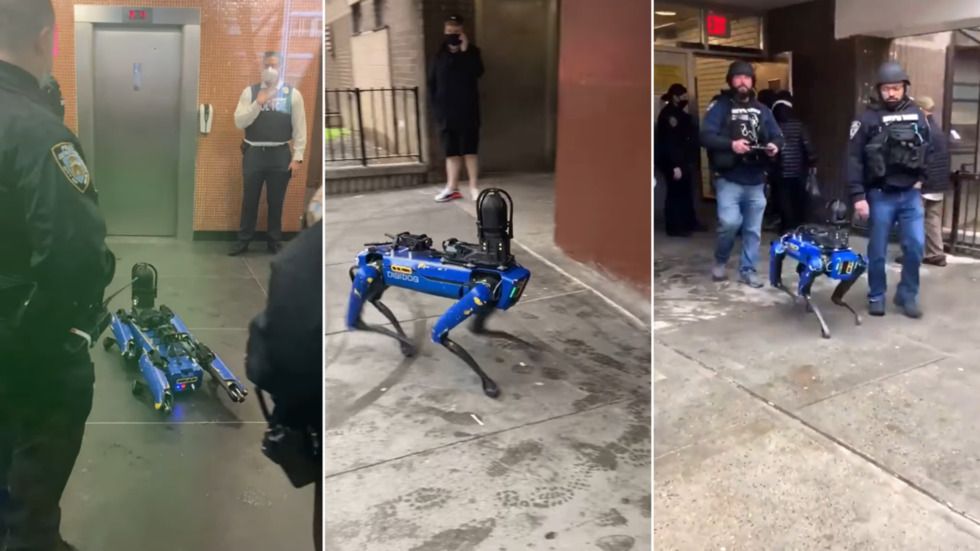Russian officials stated the Russian Army would be creating its first unit with strike robots, which will operate five Uran-9 tanks or 20 combat vehicles.




The speed at which new autonomous weapons are being created and improved is impressive but also staggering.
By Kris Osborn
Drone fleets, robotic vehicles, and multi-domain manned-unmanned connectivity are changing the future of warfare.
Around a century ago when film stocks and photographs were first coming to light, they faced a number of challenges in capturing the essence of an image. In addition to the black and white limitation, photography and film methods also struggled to capture other various elements of the color spectrum, rendering many images of famous figures appearing differently than they may have actually looked.
Now, a new AI imaging technique uses color to restyle old photographs in a way that could almost pass for modern day photographs. This colorization method mitigates the main obstacles of cameras and lenses from the olden days—namely, the orthochromatic nature of those tools, meaning that the photo capture device in question incorporated all detected light into the image without discrimination. The inclusion of all of this light resulted in photos that appeared grainy and noisy, leading to renowned figures such as U.S. president Abraham Lincoln looking far older and wrinklier than he actually was.
These days, especially with the aid of computer graphics, more advanced photographic techniques have taken advantage of the fact that light tends to penetrate the surface of human skin and illuminate the flesh from underneath. This illumination helps to eliminate extra noise and wrinkle marks that marred many images from the early 1900s.

Whatever business a company may be in, software plays an increasingly vital role, from managing inventory to interfacing with customers. Software developers, as a result, are in greater demand than ever, and that’s driving the push to automate some of the easier tasks that take up their time.
Productivity tools like Eclipse and Visual Studio suggest snippets of code that developers can easily drop into their work as they write. These automated features are powered by sophisticated language models that have learned to read and write computer code after absorbing thousands of examples. But like other deep learning models trained on big datasets without explicit instructions, language models designed for code-processing have baked-in vulnerabilities.
“Unless you’re really careful, a hacker can subtly manipulate inputs to these models to make them predict anything,” says Shashank Srikant, a graduate student in MIT’s Department of Electrical Engineering and Computer Science. “We’re trying to study and prevent that.”


Opportunity to Publish AI Related Papers in a Peer-Reviewed Journal w/o cost. One in the BICA*AI 2021 Conference and the Philosophy and Computing Conference at IS4SI Summit in September.
One of the bigger problems I have run into in doing research out of a small lab is the cost of publishing papers and get them peer-reviewed. Many of the most specialized scientific conferences like BICA Society (Biologically Inspired Cognitive Architectures for AI) can not afford to subsidize costs. This means limits on how many papers can be released and spreading papers over many years sometimes. Recently I got invited to produce and help produce two scientific conferences at the IS4IS summit in September, and the best part is that IS4SI has gotten a grant to cover publishing costs. This means everyone for both conferences is able to publish (assuming your paper meets standards) and attend for free.
If for some reason, your paper does not meet the quality or topic bar’s, we can help you. So the two VIRTUAL conferences are:
BICA*AI 2021 – Biologically Inspired Cognitive Architectures for AI (I’m the chair on this one) This conference contributing to the 2021 Summit of the International Society for the Study of Information (IS4SI), is about how data and data architecture is used and implemented in theory and practice in agent-based systems using cognitive architectures that are inspired in large part by the human and animal mind. All aspects of information theory and information architecture in a Biologically Inspired Cognitive Architectures (BICA) based system may be covered. This conference is about information theory from the BICA perspective.

The human brain, just like whatever you’re reading this on, uses electricity to function. Neurons are constantly sending and receiving electrical signals. Everyone’s brain works a bit differently, and scientists are now getting closer to establishing how electrical activity is functioning in individual patients’ brains and how to stimulate it to treat neurological and psychiatric disorders. Some scientists are even using advanced AI predictive technology to enhance their brain stimulation therapy methods.

A $75000 robot dog seen leaving a Manhattan housing project has outraged city residents who heard less than a month ago that the pricey Boston Dynamics bots would be banned from being used as weapons.
The dog was seen exiting the housing project on Monday with a group of human police officers, who acted almost subservient to the shiny blue metal creature while escorting it out of the Kips Bay building. While the New York Police Department insisted the faux-canine had not played an “active role” in the operation, which allegedly involved removing an armed man from an apartment belonging to a woman and her baby, its appearance seemed to cast a spell over the assembled residents.
One resident, tenant organization head Melanie Aucello, rushed back home after receiving a handful of calls about “police in the building” and was wildly disturbed by what she saw there – not just the dog, but its effects on people.

Words categorize the semantic fields they refer to in ways that maximize communication accuracy while minimizing complexity. Recent studies have shown that human languages are optimally balanced between accuracy and complexity. For example, many languages have a word that denotes the color red, but no language has individual words to distinguish ten different shades of the color. These additional words would complicate the vocabulary and rarely would they be useful to achieve precise communication.
A study published on 23 March in the journal Proceedings of the National Academy of Sciences analyzed how artificial neural networks develop spontaneous systems to name colors. A study by Marco Baroni, ICREA research professor at the UPF Department of Translation and Language Sciences (DTCL), conducted with members of Facebook AI Research (France).
For this study, the researchers formed two artificial neural networks trained with two generic deep learning methods. As Baroni explains: “we made the networks play a color-naming game in which they had to communicate about color chips from a continuous color space. We did not limit the “language” they could use, however, when they learned to play the game successfully, we observed the color-naming terms these artificial neural networks had developed spontaneously.”